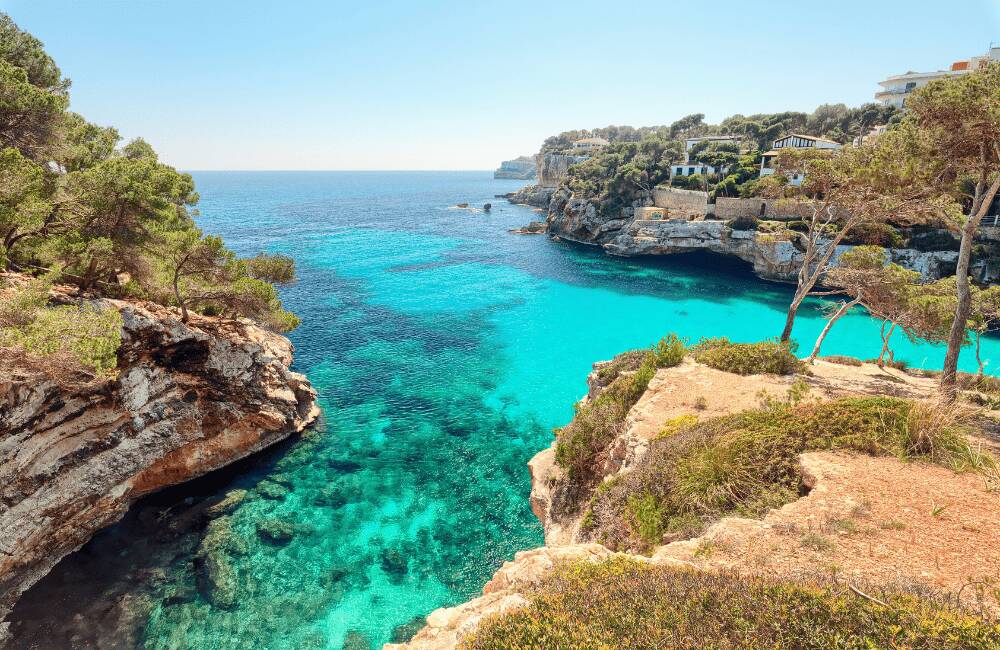Spain is one of the most visited destinations in Europe, known for its breathtaking landscapes, vibrant culture, and rich history. From the colorful streets of Barcelona to the historical monuments of Madrid, it offers countless adventures. Whether you’re exploring iconic landmarks or relaxing on sun-kissed beaches, Spain has something for everyone. But when is the best time to visit? Timing is key, it helps you avoid large crowds, enjoy favorable weather, and find the best travel deals.
The best time to visit Spain depends on the activities you’re planning. Are you interested in exploring cities at a comfortable pace or lounging on pristine coastlines? Several factors, such as weather, crowd levels, and local events, vary depending on the month. Understanding seasonal weather patterns and regional happenings helps travelers plan their trips more effectively.
Don’t forget to travel with insurance. Travel insurance covers unforeseen expenses like medical emergencies and lost luggage. It gives you peace of mind, allowing you to fully enjoy all that Spain has to offer. This article will guide you through the best times to visit Spain and help you plan the perfect holiday.
Index
What is the best month to visit Spain?
The best month to visit Spain depends largely on the experience you’re after. May and September offer ideal weather and fewer crowds, making them perfect months to explore Spain. The climate during these months is comfortable for outdoor activities and sightseeing, without the intense summer heat. Travelling during off-peak periods allows you to experience Spain more authentically, with shorter lines and lower hotel prices.
Spain comes alive with its most vibrant festivals and cultural events from March to May and September to October. Semana Santa (Holy Week), celebrated in cities like Seville and Málaga, kicks off the festival season in April. These periods showcase traditional processions, energetic street celebrations, and historic religious customs. The weather during these months is also pleasant, making it easy to enjoy the festivities.
Beach lovers will find June through August ideal for coastal adventures, but they should be prepared for peak temperatures and heavy tourist traffic. Barcelona and Madrid, in particular, become extremely crowded during the summer. For a more relaxed experience, plan your visit just before or after summer—when the weather is still warm, but the crowds are thinner.

What is the cheapest time to go to Spain?
Spain’s lowest travel prices can be found from November to February, which marks its off-season. Tourist numbers decline, resulting in cheaper flights and hotel rates. With fewer visitors, major attractions are less crowded, offering a more relaxed travel experience. While the Basque Country can be chilly, southern cities like Seville, Granada, and Málaga enjoy mild winters, making them great options for winter visits. Despite cooler temperatures, this season is ideal for budget-conscious travelers to explore Spain’s rich cultural heritage.
Affordable prices can also be found during the shoulder seasons, March to May and September to October. These months offer mild weather and fewer crowds, along with reasonable travel rates. In spring, towns are lively with blooming fields, while fall brings warm autumn colors to the countryside. While prices may be slightly higher than in winter, they remain far more affordable than during summer.
During these shoulder months, you can attend famous cultural events like Seville’s Feria de Abril and Rioja’s Fiesta de la Vendimia without the hefty price tag of peak season. Budget travellers will enjoy pleasant weather, lower prices, and vibrant cultural experiences.

What month is the rainy season in Spain?
Northern and central Spain experience the most rainfall from November through February. Cities like Bilbao, Santander, and Santiago de Compostela often receive consistent rain during winter. The lush greenery of the northern coast owes its beauty to this frequent rainfall. Lower temperatures and occasional thunderstorms may limit outdoor activities such as hiking and open-air sightseeing. While cities like Madrid and Barcelona also receive rain, it’s usually less frequent and intense than in the north.
Southern Spain tends to stay drier during the rainy season. Regions like Andalusia, with cities such as Seville, Granada, and Málaga, are more inviting in winter. Though cooler, the weather remains mild and pleasant, perfect for exploring the area’s history and unique culture. Fewer tourists also mean a more peaceful experience in these typically popular cities.
If you’re visiting Spain during the rainy season, be prepared for wet weather. Waterproof clothing and footwear are essential, and checking local forecasts can help you plan better. While some outdoor activities might be limited, the slower pace and reduced crowds can make for a more relaxed and budget-friendly experience.
What is the most crowded month in Spain?
August is the most crowded month in Spain, marking the height of summer. Cities and coastal regions are packed with both locals and tourists eager to enjoy the sunshine. Popular destinations like Barcelona, Madrid, and the Balearic Islands see a huge surge in visitors. The month is filled with long days, vibrant festivals, and numerous cultural events, making it an exciting yet busy time to visit.
However, summer temperatures, especially in southern cities like Seville and Córdoba, can become extreme, often surpassing 100°F. For non-locals, this can make outdoor exploration uncomfortable. While beach lovers can still enjoy Spain’s coasts, the high heat and dense crowds can diminish the enjoyment of sightseeing. Attractions become packed, lines grow longer, and prices rise sharply.
If you’d prefer to avoid the heat and the crowds, May and September are excellent alternatives. These shoulder season months offer warm, comfortable weather with fewer tourists and more affordable accommodations. You’ll still be able to enjoy Spain’s beaches and landmarks, but in a more laid-back and budget-friendly setting.

When to go to Spain and Portugal?
The best time to visit both Spain and Portugal is during spring (April–June) and fall (September–October). These months offer mild, pleasant weather ideal for outdoor activities like sightseeing, hiking, and city exploration. Walking through cities like Barcelona, Lisbon, and Seville is especially enjoyable, with temperatures ranging from 60°F to 75°F, perfect for avoiding the scorching heat of summer. You’ll also benefit from fewer crowds and lower prices during these seasons.
While summer (June–August) is great for beach goers, it also marks peak tourist season. Cities and coastlines become crowded, and flights and accommodations are significantly more expensive. Destinations like Madrid, Lisbon, the Algarve, and the Costa Brava are particularly popular during this time. Though fun for beach holidays, the intense heat and heavy crowds can detract from a relaxing experience.
If you prefer to avoid large crowds and extreme heat, April, May, and September are the best months to visit both countries. These months provide the perfect balance of good weather, fewer tourists, and cultural events. Enjoy local festivities like Spain’s Feria de Abril or Portugal’s wine harvest celebrations in a more relaxed atmosphere. Affordable prices, comfortable temperatures, and cultural richness make these seasons ideal.

Don’t forget your Heymondo Travel Insurance
Travelling abroad requires reliable travel insurance to ensure a stress-free experience. It protects you from unexpected events like medical emergencies, trip cancellations, or lost luggage—any of which could disrupt your journey. Without proper coverage, you could face high healthcare and service costs while abroad. Whether you’re navigating busy streets, hiking remote trails, or simply relaxing on the beach, insurance gives you peace of mind.
Heymondo Travel Insurance offers comprehensive protection for all travelers. Through the Heymondo Assistance App, you can access 24/7 worldwide medical support. This feature connects you immediately with a professional care team in case of emergencies. With coverage up to $10,000 for medical expenses, and protection for lost or stolen luggage, your health, and belongings are in safe hands.
Don’t leave your trip to chance, make sure it’s backed by insurance you can trust!
Featured stories













